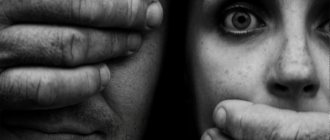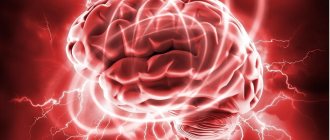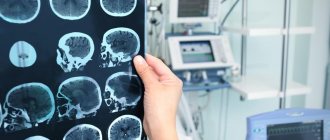Service price
- HOSPITAL Day hospital5 000
- Day hospital with intensive care8,000
- 24-hour hospital (all inclusive, cost per day) 12,000
- 24-hour hospital (all inclusive, cost per day). Single occupancy24,000
- 24-hour hospital (all inclusive, cost per day). Single occupancy in a superior room 36,000
- Primary family counseling for relatives of patients undergoing inpatient treatment free of charge
- Group psychotherapy for relatives of patients undergoing inpatient treatment free of charge
- Group psychotherapy for 24-hour and day hospital patients free of charge
- Individual post for a hospital patient (if indicated)6,000
Paranoid
(paranoid syndrome, paranoid psychosis) is a painful condition manifested by the presence of inconsistent and unsystematized delusions (false conclusions), based on absurd and contradictory evidence, and combined with deceptions of perception in the form of hallucinations, illusions, and mental automatisms.
Delirium completely covers the sick person and causes him to behave incorrectly. A critical attitude towards one’s condition and behavior is lost.
Paranoid from Greek is translated as similar to paranoia (paranoia from Greek is madness). Paranoid and paranoid are synonyms.
Based on the severity and severity of delusions, psychiatrists distinguish three types of delusions: paranoia
,
paranoid
and
paraphrenia
.
The content of delusional ideas may vary. Persecution, influence, special treatment, religious, love and erotic content. Deceptions of perception most often have the nature of pseudo-hallucinations (vivid images, divorced from reality, perceived with a feeling of being “made”).
Causes of paranoid
- diseases of the psyche and nervous system. The mechanism of development of the paranoid state is associated with gross disturbances of metabolic processes in the brain tissue, leading to changes in mental functions, primarily thinking and perception.
Types of manic states
There are several classifications based on the manifestations of mania and their content.
Based on content, the following types are distinguished:
- Persecution mania is accompanied by paranoia. The patient is convinced that he is being persecuted; anyone can act as a persecutor - from relatives and friends to the intelligence services.
- Mania for a special purpose - the patient is sure that he needs to create a new religion, make a scientific discovery, save humanity.
- Delusions of grandeur are similar to the previous one. The main difference is that the patient does not have a goal, he simply considers himself the chosen one - the smartest, the most beautiful, the richest.
- Mania of guilt, politeness, self-destruction, nihilistic - rarer situations. Patients prone to alcohol abuse often experience mania of jealousy.
According to the emotional state, manic syndrome can be:
- Joyful mania is excitement, an unreasonably elevated mood.
- Angry – hot temper, tendency to create conflict situations.
- Paranoid – manifested by paranoia of persecution, paranoia of relationships.
- Oneiric – accompanied by hallucinations.
- Manic-depressive syndrome is characterized by alternating mania and depression.
With manic-depressive syndrome, intervals may alternate after an equal amount of time, or one type of behavior predominates. Sometimes the next phase may not occur for years.
Due to their development, paranoid states are divided into three groups
- Endogenous. It is a manifestation of endogenous diseases: paranoid form of schizophrenia, schizoaffective disorder, delusional disorders, acute polymorphic psychotic disorders. The most specific for endogenous diseases is the paranoid state in Kandinsky-Clerambault syndrome.
- Exogenous (exogenous-organic). They develop as a result of damage to brain tissue by trauma, atrophic process, cerebral circulatory failure, neoplasms, etc. Involutional (or senile) paranoid is observed in older people and is accompanied by delusions of theft, impoverishment, or influence of loved ones.
- Reactive. Triggered by some external stressful event. Psychogenic paranoid occurs in response to mental trauma. For example, after a message that “You are invited to a conversation at the prosecutor’s office,” a person first begins to suspect some kind of danger unknown to him, and then, “having an epiphany,” he realizes that everything was done on purpose and he is the object of persecution. “Railway paranoid” has been observed in people during a long journey, when, against the background of insomnia, it begins to seem that they are being watched, pursued and hunted. Induced paranoid disorder is when a person is “infected with delusional ideas” of a loved one and begins to completely share them; this is one of the mechanisms of the existence of sects and terrorist organizations.
Special mention should be made of PARANOID personality disorder. This is a type of psychopathy (personality disorder), in which throughout a person’s life, such characteristics as suspicion, a tendency to complex and at the same time erroneous interpretations of events, stubbornness and categoricalness are observed.
In this case, there are no hallucinations and the condition does not reach the severity of psychosis with grossly impaired abnormal behavior. Such people have poor relationships with others and do not stay in one place of work for long. Over the course of life, these personality traits may strengthen or weaken.
The PARANOID form of schizophrenia should also be distinguished. This is the most common type of schizophrenia. This form of schizophrenia is characterized by exacerbations in the form of a full-blown paranoid syndrome with delusions and hallucinations and the gradual development of the so-called schizophrenic defect (lack of will, passivity, isolation, unemotionality).
Paranoid personality disorder - symptoms and treatment
The need to systematize variants of the disorder more often leads to classification according to the plot of overvalued ideas: jealous people, inventors, querulants, fanatics, etc. However, this approach is quite superficial and does not allow us to understand the essence of the intrapsychic mechanisms of ongoing personal events.
At the moment, it is clinically more justified to distinguish two polar variants of paranoid RL:
- expansive shape;
- sensitive form.[9]
The expansive variant includes pathological jealous people, litigators, truth-seekers, and reformers. Being prone to lies from an early age, they are vindictive, “do not see the beam in their own eye”, they can be characterized as slanderers and complainers. They are smug and confident that their understanding of their specialty is perfect. Not wanting to obey, they strive to occupy a higher position, fighting exclusively with personal enemies. By choosing science as their activity, they pursue the same goal - to humiliate their enemies. The whole life of such individuals is a similar struggle. They are sthenic (efficient, resistant to stress) and exalted (in an inspired state). The pace of their thoughts is accelerated and their mood is elevated.
Between the exalted and sensitive poles, there are many transitional forms , for example, the “sectarians” described above by K. Schneider, who are closer to the psychopaths of the schizoid circle.[1]
The sensitive pole of paranoid disorder was first described by E. Kretschmer, and A.E. Lichko identified it as a separate type of psychopathy. Outside of decompensation (exacerbation) of the disorder, sensitive paranoids are to some extent similar to sensitive schizoids. Their characteristic feature is the combination of asthenic personality traits (fatigue and mood instability), sensitive (increased sensitivity, impressionability) and sthenic ones. They are characterized by a lack of affective discharge, which leads to stagnant affect. Therefore, they react deeply and lastingly to various kinds of conflicts.
People of the sensitive pole are rather suspicious, self-critical, timid, shy, and irritable. The big difference is the accentuated feeling of failure in the professional sphere and everyday issues. At the same time, the standards against which they evaluate themselves are set by them independently. The content of their mental life is characterized by complexes of shameful ethical insufficiency.
During the period of decompensation, the world of a sensitive paranoid seems to him to be colored by that same lingering affect. The starting points of experience are not only sexuality complexes (such as masturbation or gerontophilia), but also dissatisfaction with work (slowdown in career growth) and the family situation.[9]
During the course of the disease, two main phases :
- compensation - when the features are relatively smoothed out;
- decompensation with aggravation of interpersonal conflicts and delinquent behavior (often occurs during the period of puberty crisis - adolescence).
Detecting a paranoid state
A psychiatrist diagnoses delusional disorders. As a rule, relatives and others are the first to notice improper behavior. They are often the ones who initiate requests for help.
A paranoid person is characterized by a lack of a critical attitude towards himself, that is, the sick person does not realize that he is sick, and, overcome by delusions and hallucinations, behaves absurdly, incorrectly, and often even resists seeing a doctor and treatment.
Sometimes such patients, nevertheless, come for help to a psychiatrist on their own with complaints of insomnia, the feeling that they have been poisoned, “artificially driven crazy,” “voices and sounding thoughts are directed at them,” “forced to do unpleasant things.”
An examination of such a patient by a psychiatrist and acquaintance with his life history is often enough to make a conclusion. Additional studies (pathopsychological examination, tests, electroencephalography, etc.) make it possible to clarify the condition.
Symptoms and signs of the disease
In addition to the signs listed above, there are several characteristic symptoms that unite almost all manic states:
- Tendency to thoughtlessly waste money.
- Tendency to make bad deals and gamble.
- Frequent violation of the law.
- Tendency to provoke fights and conflicts.
- Excessive alcohol consumption or addiction to other bad habits.
- Promiscuous sexual behavior.
- Pathological sociability - the patient often meets strange, suspicious individuals and spends time in a variety of companies.
If these signs get out of control, qualified medical attention is needed. It is important to understand that such behavior is not promiscuity, but symptoms of a disease that needs to be treated. Appealing to common sense is useless.
In some cases, the patient has a specific mania - for example, a mania of a special purpose. Then the patient is sincerely confident in his special mission and tries to implement it with all his might, despite the skepticism of others.
Treatment of paranoid syndrome
Treatment of paranoid is determined by the causes and mechanisms of development of the disease, and the individual characteristics of the patient. All this is determined by a psychiatrist during a consultation in the department where the patient is undergoing examination and treatment. The basis of treatment is drug therapy.
Over the past 50 years, drugs with a specific antidelusional effect—neuroleptics—have been successfully used. In addition - neurometabolic therapy and restorative treatment.
Isolation of the patient from external stimuli for the period of acute condition has a great therapeutic effect. Non-drug methods include diet therapy, shock treatment (ECT), cognitive psychotherapy, and exercise therapy.
Features of the development of mania
In some cases, manic tendencies can be a personality trait, just like apathy tendencies. Increased activity, constant mental agitation, inadequately elevated mood, outbursts of anger or aggression - all these are symptoms of manic syndrome. This is the name given to a whole group of conditions that have different causes and sometimes different symptoms.
Both various life situations and incidents, as well as uncorrected pathological character traits, lead to the development of mania. A person prone to manic behavior is very often obsessed with an idea, he strives to realize it, even if it is unrealistic. Often the patient is driven by theories that have political, religious or scientific justifications. Quite often, patients show a tendency to be active in social and community activities.
A significant proportion of manic patients have so-called overvalued thoughts and ideas. Sometimes they can be global, sometimes these are ideas at the everyday level. From the outside, the behavior of patients talking about their ideas sometimes looks quite comical. If a highly valuable thought is global in nature, the patient, on the contrary, seems thoughtful and enthusiastic to others. Especially if he has enough education and erudition to substantiate his beliefs.
This condition is not always a pathology; it can be individual characteristics of the psyche. Treatment is necessary if overvalued thoughts and ideas get out of control and consume the patient’s entire life, in other words, interfere with the life of himself or those around him.
Causes of paranoid disorder
As with other personality disorders, their formation is influenced by a combination of factors (genetic, psychogenic, biological), but paranoid disorder also has its own differences.
The disorder is initiated in childhood, with childhood complexes and problems. The child is suspicious, straightforward, and has an inflated opinion of his own capabilities. Such children neglect the interests of others, often take offense, and are distinguished by rancor and vindictiveness. With age, the features are fixed and become more pronounced. The disorder begins to fully manifest itself after 20-25 years.
Paranoid disorder is more common in men than in women. The reasons for its occurrence are not fully understood. Risk factors are the presence of other mental illnesses - schizophrenia and delusional disorders in family members, unhealthy family relationships. Manifestation of cruelty on the part of parents, overprotection, totalitarianism, great detachment or demandingness towards the child; as a result of such relationships, the child becomes distrustful of the people around him. The disorder may be a variant of a kind of “self-preservation instinct,” for example, if in childhood the child often had to defend himself. Such people are characterized by negative stereotypes and dividing everyone into “friends and foes.”









